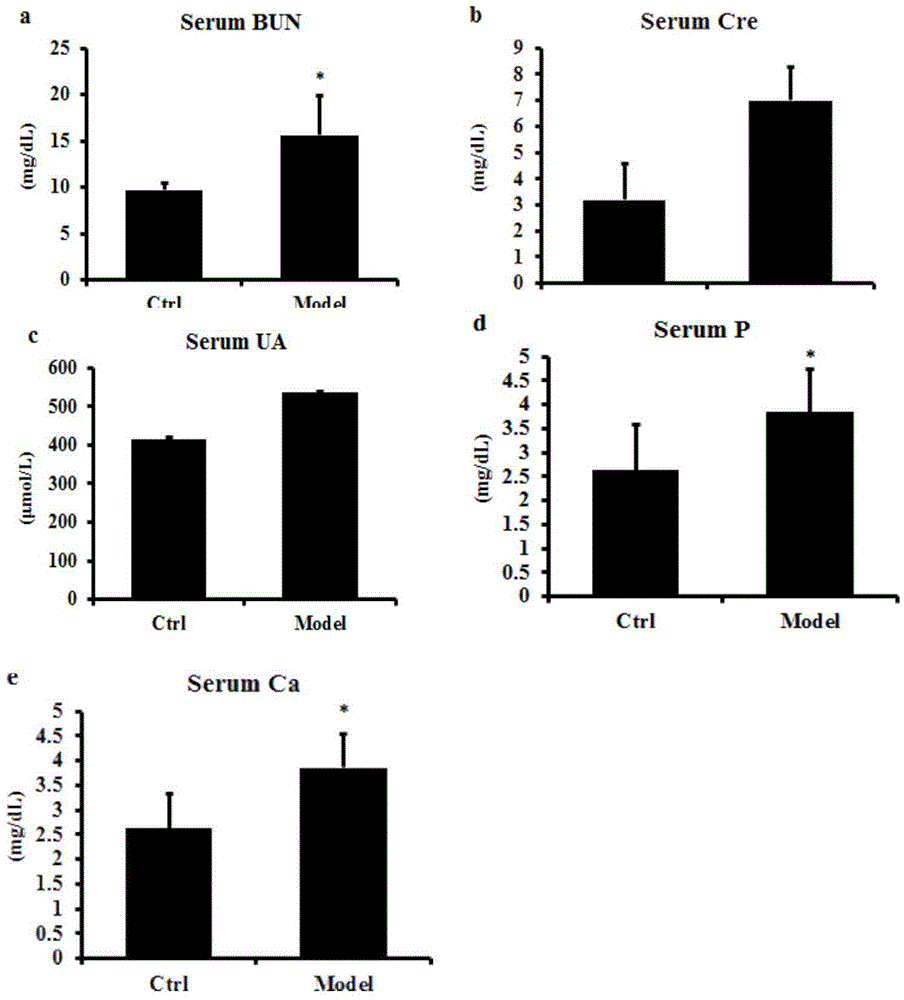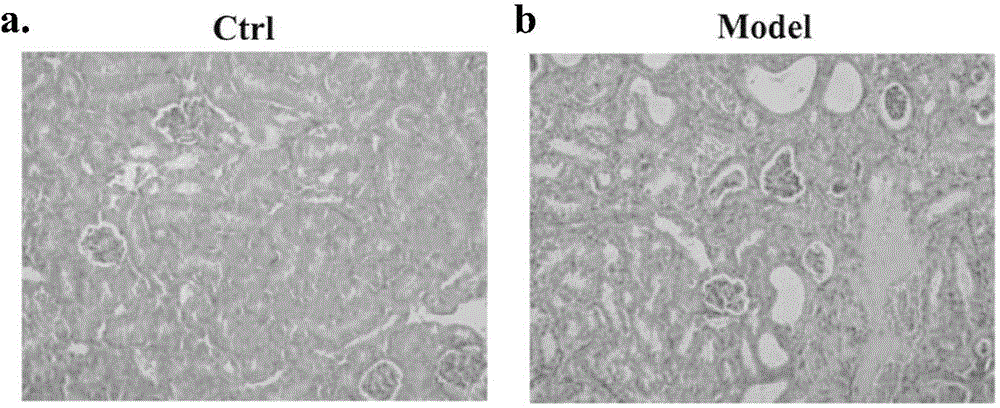Establishing method of chronic kidney disease angiosteosis experiment model
A chronic kidney disease and vascular calcification technology, applied in the field of establishing an experimental model of chronic kidney disease vascular calcification, can solve the problems of weight loss in rats, complicated preparation process, low incidence of vascular calcification, etc.
- Summary
- Abstract
- Description
- Claims
- Application Information
AI Technical Summary
Problems solved by technology
Method used
Image
Examples
Embodiment 1
[0031] Embodiment 1 establishes the experimental model of vascular calcification of chronic kidney disease
[0032] (1) The dose of 100mg / kg adenine was used to gavage experimental C57BL / 6 mice once every 2 days for 1 week;
[0033] (2) From the second week to the sixth week, administer the same dose of adenine once a week;
[0034] (3) From the 2nd week to the 6th week, active vitamin D was administered every 2 days 3 Calcitriol1 μ g / kg; Adopt intraperitoneal injection mode of administration in the embodiment of the present invention;
[0035] (4) From the 2nd week to the 6th week, all the model mice were fed a high-phosphorus and low-protein diet with a phosphorus content of 1.2%, and an experimental model of vascular calcification of chronic kidney disease was established.
PUM
 Login to View More
Login to View More Abstract
Description
Claims
Application Information
 Login to View More
Login to View More - R&D
- Intellectual Property
- Life Sciences
- Materials
- Tech Scout
- Unparalleled Data Quality
- Higher Quality Content
- 60% Fewer Hallucinations
Browse by: Latest US Patents, China's latest patents, Technical Efficacy Thesaurus, Application Domain, Technology Topic, Popular Technical Reports.
© 2025 PatSnap. All rights reserved.Legal|Privacy policy|Modern Slavery Act Transparency Statement|Sitemap|About US| Contact US: help@patsnap.com



